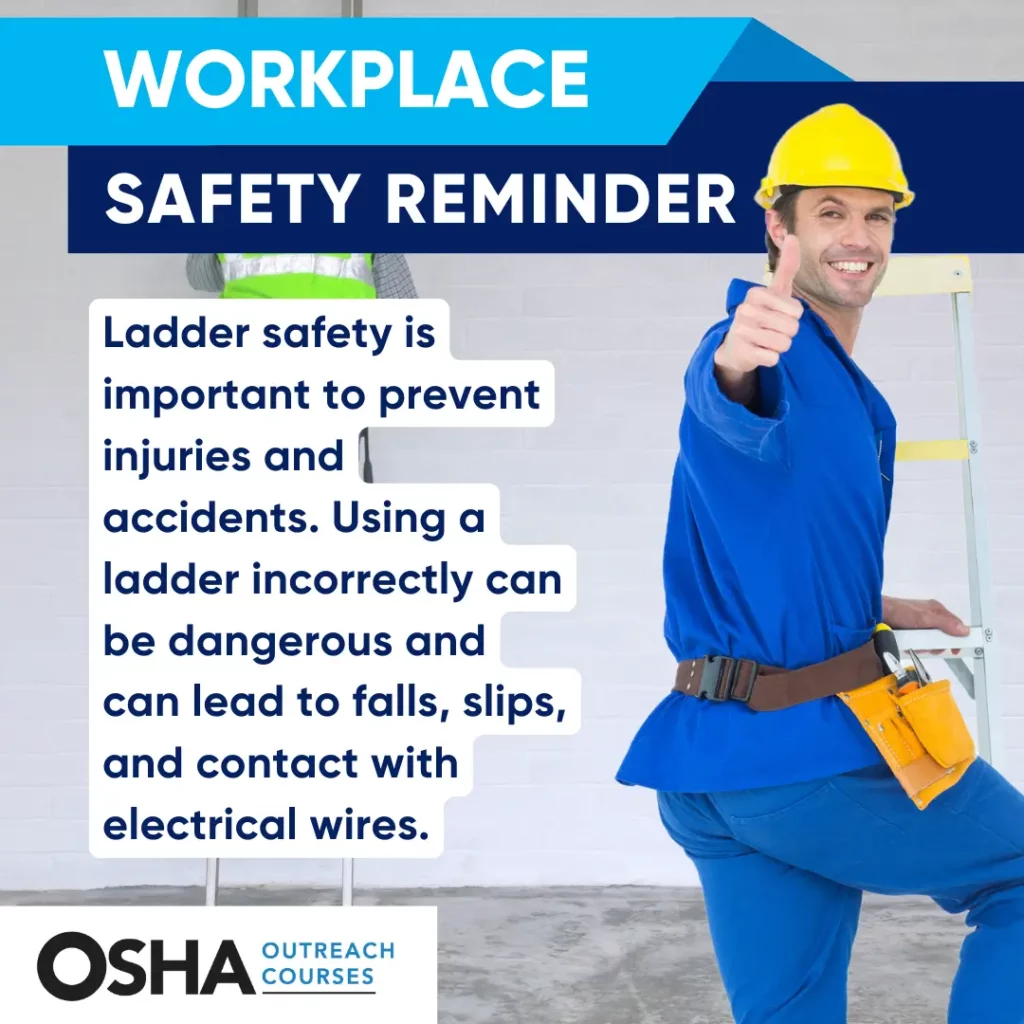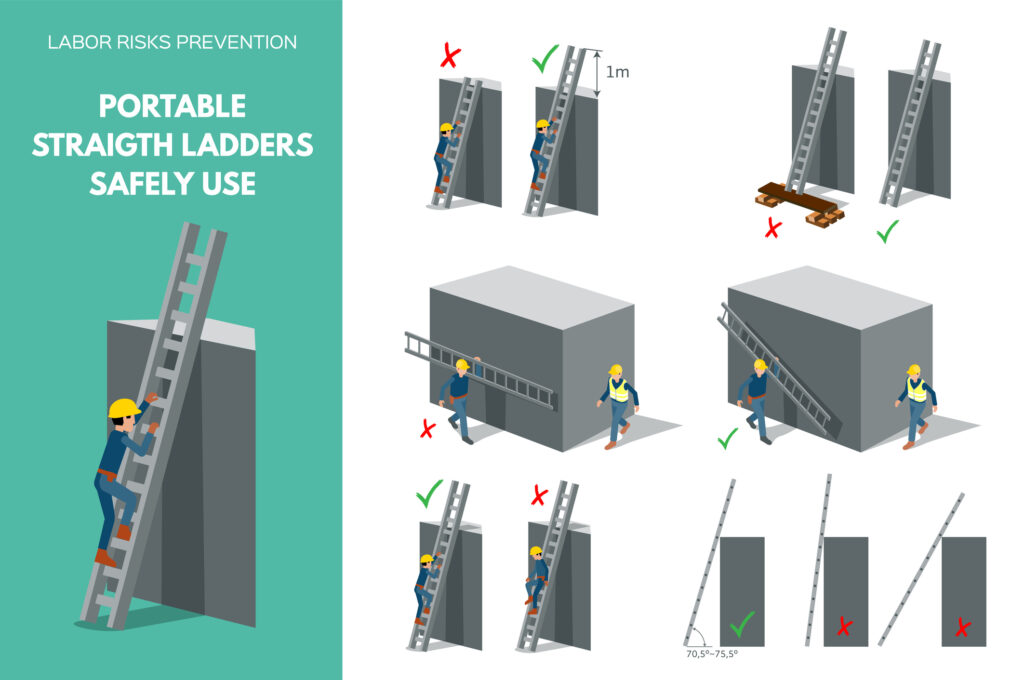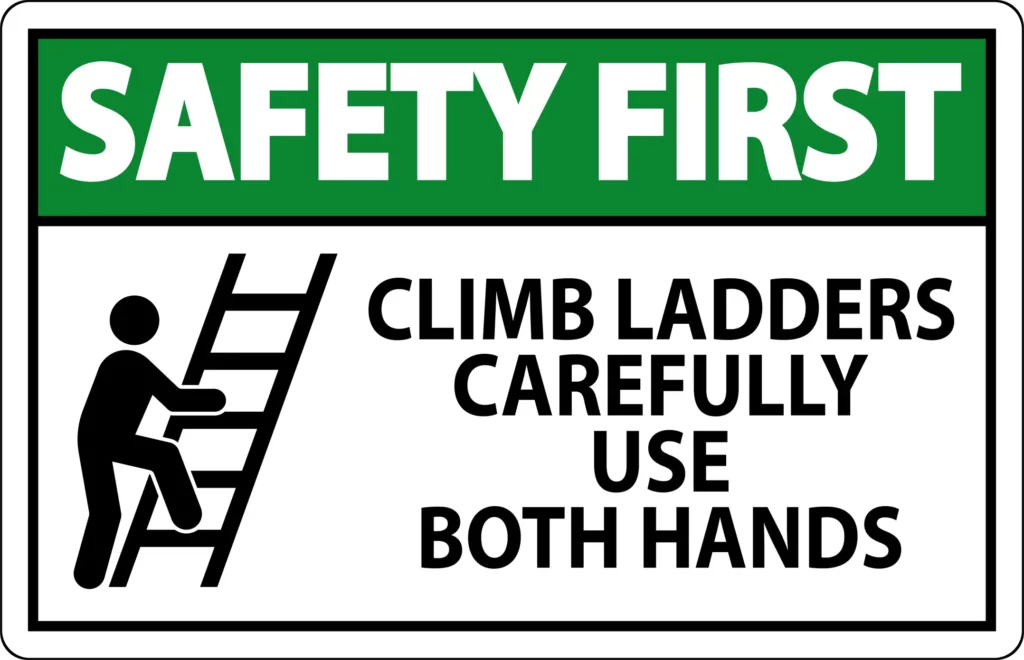OSHA’s ladder regulations were among the four fall prevention-related standards that ranked in the agency’s top ten most cited violations in 2023. Ladders were the main cause of 161 fatal work injuries in 2020, according to the Bureau of Labor Statistics. Although this is a 5.8% decrease from 171 deaths in 2019, it may not actually be a sign of success because of pandemic shutdowns.
Fatal work injuries due to ladders, all ownerships, 2016–20
2016–2020 | OSHA Fatality Data
Nonfatal workplace injuries involving days away from work, with ladders as the primary source, for occupational groups, all ownerships, 2020
Reported by Occupational Group

OSHA Ladder Safety
Basic ladder safety knowledge is essential to safeguarding oneself from potentially catastrophic falls and other unanticipated mishaps. Therefore, it is essential for individuals who are working in construction companies to follow the OSHA ladder safety rules in order to avoid any workplace injury or accidental death.
In this article, we will discuss the 9 ladder safety rules that should be followed by every employee at the construction site. Let’s have a look at the basic rules of ladder safety.
Make Sure To Use the Right Ladder

Ladders come in a variety of forms
Here is a brief summary of five main ladder classifications, together with the associated duty grade and weight capacity, to assist you choose the best ladder for your needs:
Up to 375 lbs. is considered Special Duty (IAA).
Up to 300 lbs. is considered Extra Heavy Duty (IA).
Heavy Duty: 250 lbs and above.
Upper Limit of Medium Duty: 225 lbs.
Light Duty: 200 lbs. and above.
Make Sure The Ladder Is Not Damaged
Any gouges or marks that might weaken the ladder
Missing or loose rivets or bolts can pose serious safety hazards
Structural flaws include broken rungs, sharp bends, or cracks
Components that are broken or absent, such as railings or footpads
Ensure the Physical Capability Of the Ladder

Dangerous for them to Utilize the Ladder
A person’s physical fitness alone is insufficient; they also need to be free of any conditions that might make it dangerous for them to utilize the ladder.
Ladder Load Limits
According to OSHA ladder safety rules, using safe ladders usually requires certain weight restrictions. The weight ratings and classifications that ladder manufacturers assign to each unit are therefore often limited to or multiples of the OSHA ladder weight restrictions. They must be able to endure an 18-inch (41 cm) drop test using a 500-pound (226 kg) weight without breaking.
According to OSHA ladder safety rules, using safe ladders usually requires certain weight restrictions. The weight ratings and classifications that ladder manufacturers assign to each unit are therefore often limited to or multiples of the OSHA ladder weight restrictions. They must be able to endure an 18-inch (41 cm) drop test using a 500-pound (226 kg) weight without breaking.
Basic Practice Rules

Guidelines for Safety Precautions
Stable surfaces should be used with ladders.
Stairways
That is unless they are stabilized or fastened to avoid unintentional movement when a worker is on a ladder, no ladder is extended, relocated, or otherwise changed, and on slick terrain, portable ladders are stabilized and fastened.
Inspecting The Ladder Before And After Using

Verify the Stability of the Ladder
On the other hand, after using the ladder, verify if the stairs, side rails, rungs, and supports have sustained any additional structural damage and look for any bending and loose bolts, hinges, and screws. Also, verify the stability of the ladder again.
Setting The Ladder Correctly

Non-Slip Base Cushions
The base of a straight ladder should be one foot away from a wall or other vertical surface for every four feet of height to the point of support, or at a four-to-one ratio.
Climb Down Carefully
When descending the ladder, keep your back to it and the three points of contact intact. Take your time and don’t make any abrupt movements. When employing leaning ladders, such as extension ladders, the ladder’s angle should be set at a 1:4 ratio. For every four meters in height, the ladder’s base is one meter away from the structure. These recommendation must be included in ladder safety program of all every construction company.
Maintain Three Points Of Contact

Ladders require workers
Keeping three points of contact at all times—two hands and one foot or two feet and one hand—is one of the basic safety guidelines for utilizing ladders. In order to improve balance and stability and lower the danger of falls, this activity is essential.
Conclusion
Ladders are excellent tools with a wide range of applications. Nonetheless, in order to prevent mishaps or injuries, it’s critical to adhere to the correct OSHA ladder rules when utilizing them. Every march, the ladder safety month is observed to raise awareness about proper usage of this tool. The month serves as a reminder to all businesses about the importance of implementing workplace ladder safety tips.










